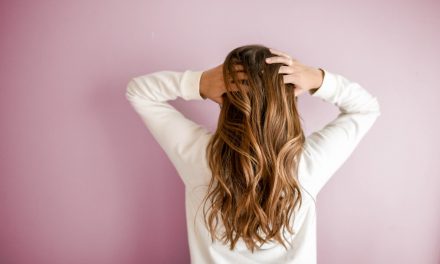Hair’s ability to absorb and retain moisture in the hair’s porosity. How grow low porosity hair is far more difficult than medium and high porosity hair. The growth of such hair is much more challenging and sometimes seems impossible, but it is not a mind-cracking scenario.
All you need is to do intensive hair care, and consistency will bring the results. While reading this about how to grow low porosity hair, you will find a better way to understand it, ways to detect it, and the 6 best methods to get long low porosity hair. Keep reading with me!
WHAT IS LOW POROSITY HAIR?
A hair strand, a collection of dead cells, consists of three main layers. Outermost is the cuticle layer overlapping each other like a roof. The middle one is the cortex and is thickest in appearance. It is build-up with pigments and fibrous proteins. The innermost layer of the hair shaft is the medulla.
Low porosity hair deals only with the cuticle layer of a hair strand. Your hair cuticles are tightly overlapped with no air spaces between them. As a result, it’s hard to get moisture, oils, and other hair care products into it. Low porosity hair is the opposite of high porosity hair, in which hair cuticles have large spaces.
REASONS FOR LOW POROSITY HAIR
Low porosity hair may be the result of genetics. Having excessive use of hair chemicals and styling tools appears not to be the cause but can make your hair of high porosity.
LOW POROSITY TEST
You can test your low porosity hair in two ways. Set a timer when you go under the shower and note when your hair will get completely wet. Low porosity hair will take more time. Plus, if your conditioner slides down the hair strands rather than absorbing, it’s also a sign of low porosity hair.
The second way to check your low porosity is to dip your clean hair strand in a glass of plain water. Strand floating on the top is an indicator of low porosity hair.
SIGNS OF LOW POROSITY HAIR
PRODUCT BUILD-UP
You know that low porosity hair does not absorb moisture due to no space between cuticles. It is also applicable for oils and other hair care products. If you apply a hydration mask, and after 20 minutes, you feel like no product is absorbed while your fingers get oily on the touch. It is a prominent sign of low porosity hair.
LONGER TIME TO WET AND DRY
Low porosity hair demands more time to absorb and evaporate water. Such hair does not wet completely and takes a long time to air-dry. Using a blow dryer will also take more time than the hair of normal people of the same length and thickness.
LITTLE OR NO ELASTICITY
After a shower, low porosity hair does not experience elasticity and bounce. You will have to stretch your freshly washed hair to check the elasticity.
6 WAYS TO GROW YOUR LOW POROSITY HAIR
LIGHTWEIGHT OILS
Coconut and olive oils are supposed to be the best hair growth oils, but these will not help in case of low porosity hair. Heavier oils have large regimes that cannot penetrate the hair cuticles, and it is the reason behind it. Is there any other option for low porosity hair?
Yes! Use argan and grapeseed oils as these are lightweight and can penetrate the hair strands more effectively, letting a wave of moisture cover the whole surface. These will prevent split-ends, and breakage and enhance the growth.
DEEP HEAT CONDITIONING
Alone deep conditioning will not bring enough results for grow your low porosity hair. You have to provide the heat to get the results. Heat will open up the cuticles and allow moisture to make its path. Always pair the deep conditioning with heat to efficient the process. Do this twice a week to get better results.
Steps to follow:
- Pour your favorite lightweight oil into a small bowl
- Heat it for a few seconds (Make sure it is not too hot to apply)
- Apply oil from roots to tips (Roots are the major sites of product build-up)
- Leave for 30 minutes or more
- Wear a heated cap and use a steamer to provide heat
- Rinse with water and use a gentle shampoo to get clean hair.
- Conditioning is as per your own choice.
PROTECT THEM WHILE SLEEPING
Sleeping on cotton pillows can cause friction resulting in brittle and tangled hair. Switch to the satin pillows or use a satin headscarf to cover your hair at night. Satin does not absorb hair moisture leaving them dehydrated. Tie your long hair in a bun before going to bed. Such tips might seem unusual, but these will be worth it.
SCALP MASSAGE
Frequent massage improves blood circulation and also removes sebum and product build-up. It promotes hair growth and adds shine to dull hair.
Steps to follow:
- Pour some lightweight oil into a bowl and heat it for a few seconds
- Section your hair and start applying
- Go from scalp to tips
- Massage gently
- Leave for half an hour
- Shampoo your hair followed by a conditioner
REDUCE PROTEIN HAIR TREATMENTS
Protein is supposed to be a healthy ingredient, but not for all hair types. Low porosity hair is prone to protein, and such products pull the moisture out of the hair, leaving them dry. The only option to use for low porosity hair is hydrolyzed protein oils. These oils have smaller regimes that can penetrate the cuticles easily.
TAKE CARE OF YOUR DIET
Food intake will bring results to your hair. If all the above methods are not beneficial, consider your meal intake. Eat a well-balanced diet enriched with protein intake like eggs, fish, meat, and dairy. Some non-meat options include lentils, beans, peanuts, and chickpeas.
FINAL THOUGHTS
Low porosity hair is not easy to handle and requires some extra care. After reading this article, you will know about low porosity hair, its signs and symptoms, and some effective ways to grow your low porosity hair. Still, have any queries? The comment section is open, and we would love to clear them right below.
Happy growth!





